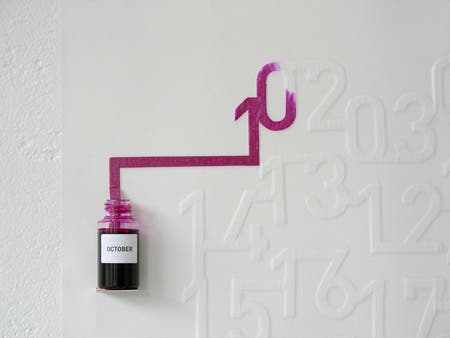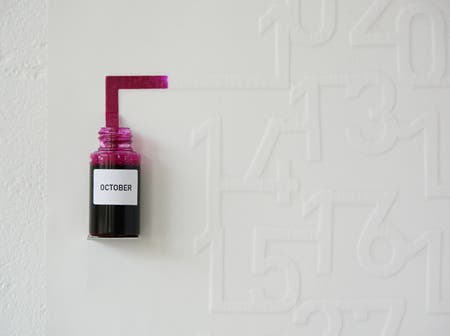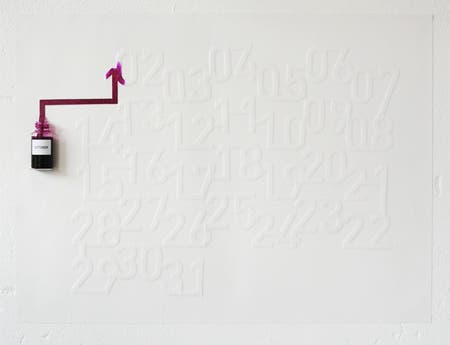
When art and science meet, the results can be incredible. Case in point, Oscar Diaz‘s ink calendar which uses capillary action to spread the ink on paper so the current date is always filled with colour.

Each date of the month is an embossed number on the paper. Because the time it takes for the ink to spread on the paper is predictable, Diaz could space his calendar figures in such a way that each passing day ‘printed’ his calendar. Each day, one blank day is filled until the end of the month or about an ink bottle’s worth.

The colors of the ink Diaz used are related to a ‘color temperature scale’. This way, each month is inked in a colour related to our perception of the weather on that month. For instance, dark blue in December, three shades of green in the spring, orange and red in the summer.
Because you can actually see the ink filling each embossed calendar date, people get a heightened perception of the passage of time. This is, in fact, the aim of the project — to address our senses, rather than the rational brain which only needs a signal and reference point.



